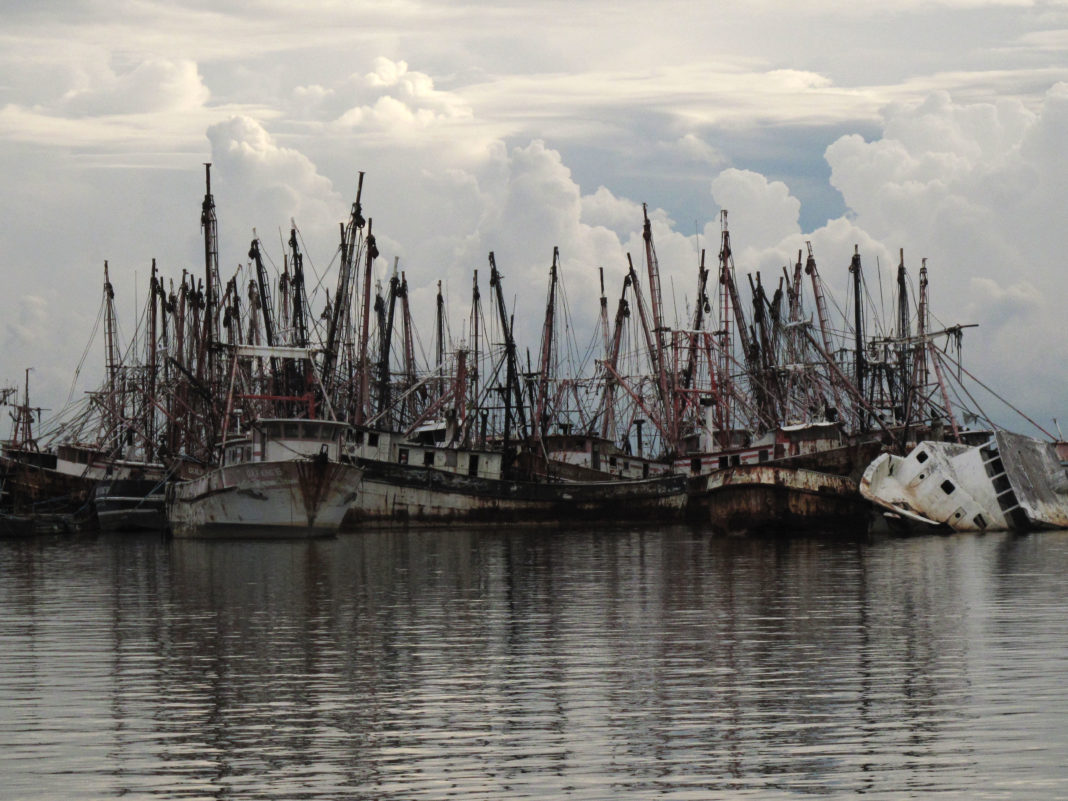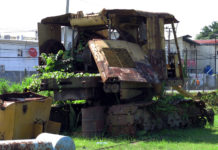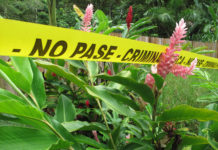
In the tropics, warm sunshine, prolific rainfall and a fierce cornucopia of otherworldly beasties all accelerate the twin processes of expiration and biological breakdown. Some of the forces are microscopic, some grotesquely large, like blaberus giganteus; the Giant Central American cockroach. But in the sultry port of Bluefields—a city perched on the Caribbean shores like some ragged black vulture—my basement room at the Hotel Don Caribe was a virtual shrine to the ever–ravenous Lord of Putrefaction.
Giant rats, roaches, fleas, flies and an array of creeping multi–coloured moulds had all encroached on my quarters. Packs of wretched feral dogs would gather by my window to howl at the moon, and some time during my final night in that iniquitous hotel, I sensed I had died and finally succumbed to rot myself.
What had brought me to Nicaragua’s far flung eastern seaboard? And why had I endured so many nights in the infernal Don Caribe?
My English taste for humiliation could not entirely account for it. Neither could my fatal streak of masochism. Sheer intrigue had drawn me to the region, but a lack of funds had been my first concern. A desire to plunge into the seamy chaos of local life had been my second. Ultimately, however, I was indulging my taste for the margins. And once I began unravelling the layers of Bluefields’ crumbling psyche, I became hooked.
Damned or Blessed Bluefields
“Bluefields is blessed!” A community leader had told me heartily, gold teeth glinting. But if anything, I was concluding the opposite.
It was a bright April morning when I emerged from the Don Caribe for the final time. The night had been sultry and I was dizzy from insomnia. My mind refused to settle inside my skull, instead drifting weightless above the city, above the sprawl of concrete houses, the rusty tin rooftops, the crisp white Moravian churches, the angular spires, upwards, into the vast, blue, untapped sky.
Far off to the east, the ocean met the heavens in a searing white–hot haze of cloud and sunlight. North and south, the coastline stretched with broad empty beaches, swirling sapphire sand banks and swollen coastal lagoons. To the west sprawled an expansive forest canopy, broken only by meandering toffee–coloured rivers and a single lone highway that rolled in perpetuity, mile upon mile towards the world outside. From above, the city of Bluefields was like a tough grey scar nestled in the flesh of some wondrously bright emerald beast: the only semblance of “civilization” for miles.
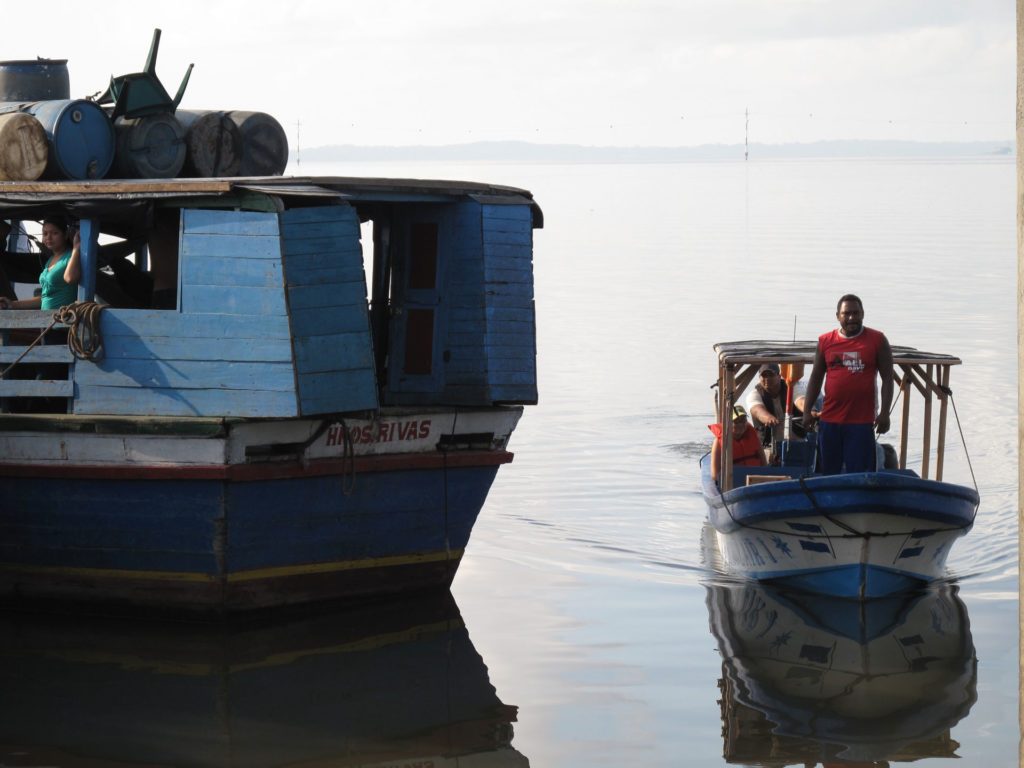
Back on earth, my body was numb. I sensed that exhaustion had conferred a state of heightened awareness, of weird translucence, perfect for the practice of street photography. Camera in hand, I proceeded to the port, hoping to capture some of the visceral scenes that had so fascinated me during my month–long investigation into the city.
The port was delirious with activity. Beyond a warren of dank brick alleys where consumptive sailors sweat out their sins, gangs of inebriated fishermen shared cigarettes and bantered. A ripe aroma of rotten fruit, diesel, dead fish, and grease suffused the air. A procession of weathered vessels bobbed past concrete piers where laborers loaded and unloaded supplies. A confused volley of orders, enquiries and insults flew back and forth like a flock of deranged sea–gulls. I pointed my camera, framed the shots, focused, and clicked.
Pirates, the Dutch, the English, and the Spanish
Through the morning haze, I could almost make out the ghost–ships of 17th century pirates, giant white sails unfolded, advancing like luminous storm clouds on the horizon. It was the Dutch, not the Spanish, who first made landfall here, when the wily pirate Henry Blauveldt—from whom Bluefields aptly inherited her name—sought refuge from the ravages of the sea.
Thanks to its thoroughly inhospitable rainforest setting (and its equally inhospitable local population), the Caribbean coast was well–positioned to fend off marauding Spanish conquistadores. Ultimately it was the English who made colonial overtures. At the invitation of the indigenous Miskito people, they secured the entire Caribbean territory as a British protectorate. The Miskito Kingdom, as it was known, was indirectly governed by a line of local kings, all educated in Britain and loyal to the British crown.
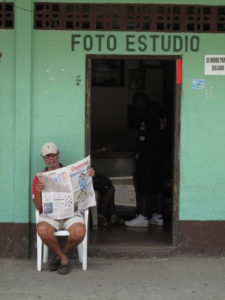 Over the years, adventurous English merchants arrived from Jamaica, bringing black slaves and laborers who would establish thriving Creole communities throughout the city. The English language flourished, and is still spoken by Nicaragua’s blacks and indigenous Ramas today. Cultural institutions, too, were heavily imported. The Dance of the May Pole—an old pagan ritual normally reserved for eccentric and ridiculously attired English Morris dancers—is performed on the coast with all the gusto Bluebirds newspaperand exuberance befitting any proud Caribbean nation.
Over the years, adventurous English merchants arrived from Jamaica, bringing black slaves and laborers who would establish thriving Creole communities throughout the city. The English language flourished, and is still spoken by Nicaragua’s blacks and indigenous Ramas today. Cultural institutions, too, were heavily imported. The Dance of the May Pole—an old pagan ritual normally reserved for eccentric and ridiculously attired English Morris dancers—is performed on the coast with all the gusto Bluebirds newspaperand exuberance befitting any proud Caribbean nation.
“But why don’t the English want to help us?” An elderly Creole shoe–shiner, Roy, asked me, as I rested next to him in a dilapidated doorway.
His question was a fair one, and one people have been asking in Bluefields for a hundred and fifty years. Under the 1860 Managua treaty between the United Kingdom and Nicaragua, the Miskito Kingdom was formally dissolved and centuries of British protection drawn to a close. Less than thirty years later, President José Zelaya initiated a harsh military take–over of the region, still dubiously described in national school–books as ‘the reincorporation of the Moskitia’.
Decades of poor management and plunder ensued. Numerous petitions were dispatched to Downing street, begging protection from the ‘Spanish devil’, who had now inundated the area and was perpetuating all kinds of injustices. No answer came.
“I hate to tell you this Roy,” I said. “But the English don’t even know where Nicaragua is.”
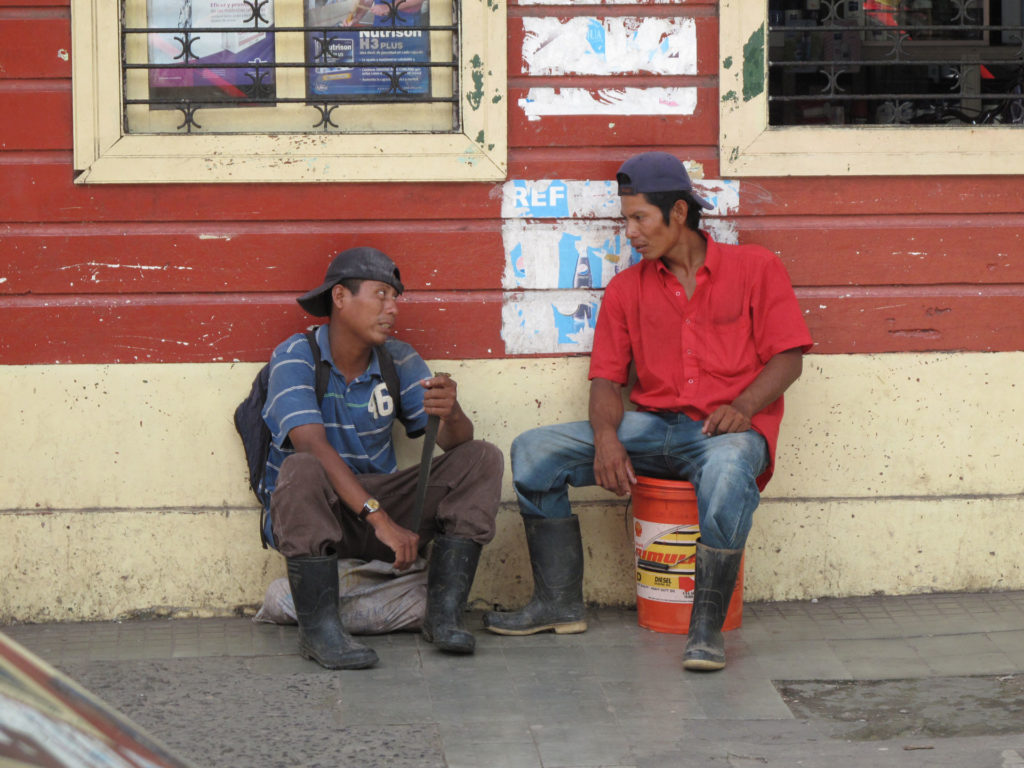
From Miskito to Meztizo
Roy smiled politely, his impenetrable dark glasses betraying nothing. I decided to change the subject. I talked about the streets. How everything of interest and importance happens in the street—the entire spectrum of human experience—all played out in the teeming theatre of public space. I showed him my camera. He took it in his black–stained fingers.
“Want to see some pictures?” I asked, fishing for attention.
“Well,” coughed Roy with a wry smile. “Perhaps not.” He scratched his white stubble wistfully, thinking for a moment. “Them eyes no good.” He said finally, lifting his glasses to reveal a cloudy, bluish–white film obscuring his gaze. “Cataracts.” He said.
A simple operation might have saved his failing sight, but on the Caribbean Coast, where even water and electricity are in short supply, a charitable eye surgeon is rare in the extreme. Roy was philosophical about his advancing blindness. It was okay. He’d seen the world. He’d travelled on ships. Known plenty women. Plenty good times. Ain’t nothing left to see anyhows. Bluefields is different now. Bluefields is Spanish now.
Moved by shame, I thanked him for his company and gave him a dollar. Then I proceeded up the main commercial drag, where a procession of tattered concrete buildings, noisy open storefronts and improvised plastic awnings welcomed shoppers and passersby. Outside a cluster of dilapidated pool halls, groups of dreadlocked youths peddled pirated CDs, and in an on–going war of bass, competed for supremacy of the road. One side belted out thunderous reggae at top volume. The other pumped out its raunchy bastard offspring: reggaeton.
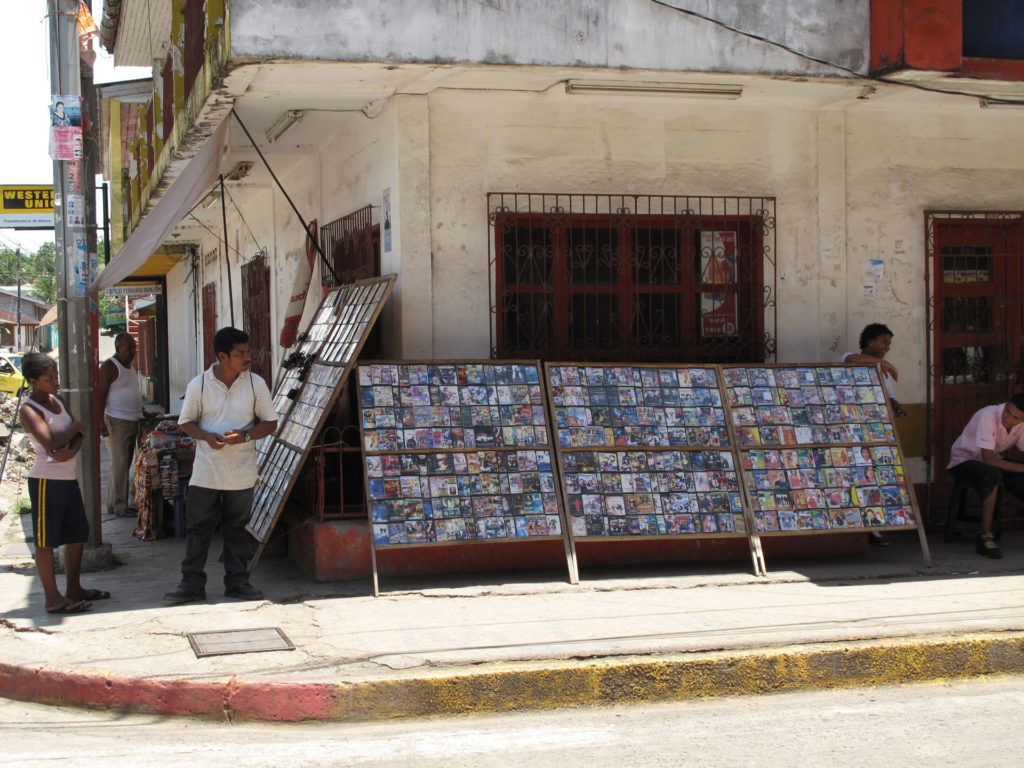
Roy’s sentiments echoed many others I’d heard. Wherever I went, there was a palpable sense of loss—not of material riches, but of culture. Since the 1990s, an ever–advancing migratory tide has been eroding the coast’s fragile ethnic fabric. The ancient Rama language, now spoken by a mere handful of elders, is close to total extinction. The Creoles, once Bluefields’ most populous group, are now marginalised and impoverished.
“Them mestizos is taking over our land.” An angry community leader, Merryl Campbell, had informed me one morning in a smoky cafe. “If we not careful, sometime soon, Bluefields ain’t gonna be called Bluefields no more. It gonna have some Spanish name, name after some Spanish hero, their hero. You know what is Bluefields?” He said defiantly. “Cotten Tree, Beholden, Old Bank, Pointeen—That’s Bluefields!”
We talked at length about a new law passed in 2003—Law 445. I’d heard it variously described as freedom, autonomy, “the only weapon we have against the Spaniard.” In essence, it demands that all indigenous and Afro–descendant territories pass through an official process of demarcation and titling, thus granting the region’s ethnic minorities full legal possession of their ancestral lands.
It was a bold step towards human rights, but I doubted it would be enough. In a land where order is maintained by a handful of corrupt politicians, crooked judges and criminal thugs, what hope could there be for this or any other law? Sure enough, I soon discovered that key figures in the Managua political scene were trying sabotage the process. As Merryl so succinctly put it:
“Central government has an agenda. They want to dominate the Atlantic coast of Nicaragua. They not interested in our rights. They only interested in our land, in our forests, our rivers, our resources. You know when they will give us our autonomy? When the land is destroyed. When there’s nothing left.”
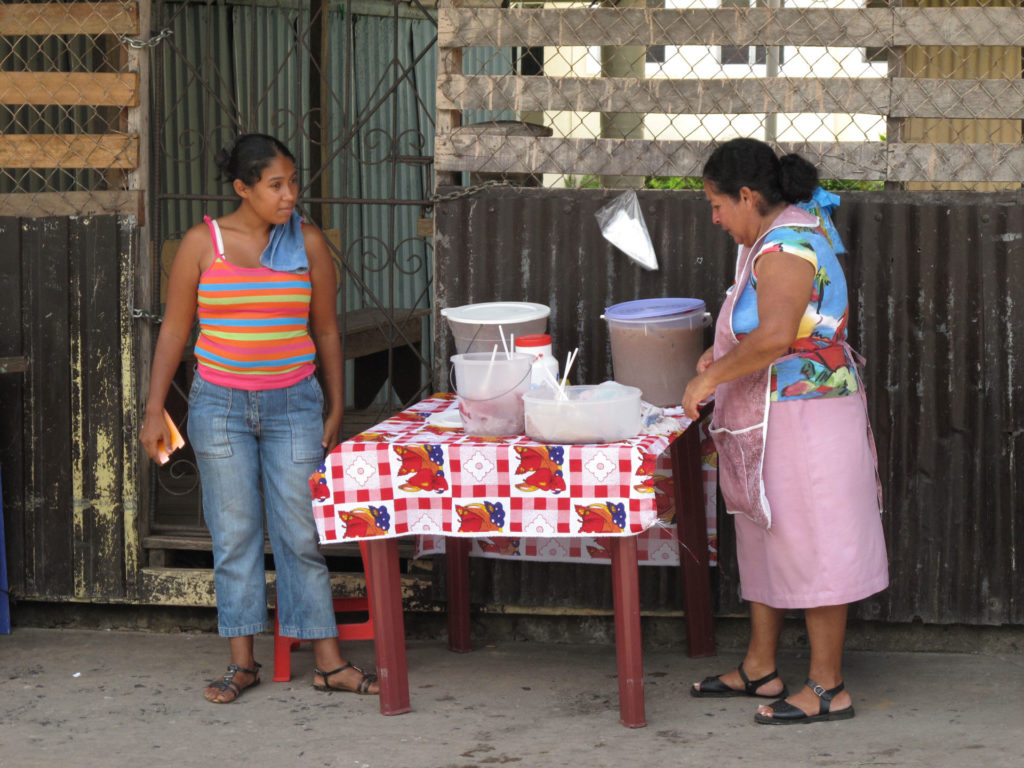
Agenda or not, as far as I could see, Bluefields was not showing any signs of cultural homogeneity. Here and there, wizened old Rama women peddled mountains of green pineapples, red–blushed mangos, sweet–smelling plantain and gnarled yucca. Cheery Creole fishermen sorted piles of shrimps on the pavements, making funny, filthy comments to smiling girls with sun umbrellas. Mestizo farmers shopped for supplies with their wives and many children in tow. Perhaps there was hope, after all, of peaceful co–existence. For is not the true flavour of the Caribbean always multi–cultural, always multi–colored?
Decay without the Regrowth
But through all the sunny hustle in Bluefields hung the unmistakable stench of smouldering desperation. Outside an open–front butcher’s shop, a large pig lay tethered to the wall. Nearby, stray dogs licked a thick layer of white fat from a discarded cow skin, black flies buzzing all around.
As I advanced towards the main plaza, I noticed that only a handful of the city’s structures were more than twenty years old. When Hurricane Joan stormed into town in 1988, she swept up Bluefields’ most historic architecture and spat out a mountain of tinder in its place. The few survivors bespoke an earlier epoch of wealth and prettiness, and hinted, forlornly, at some former incarnation as a theatre, swinging dance hall, or cinema. Now these great buildings were dilapidated and under the command of black marketers, who scrabbled inside their darkened shells with boxes and impromptu fold–up tables.
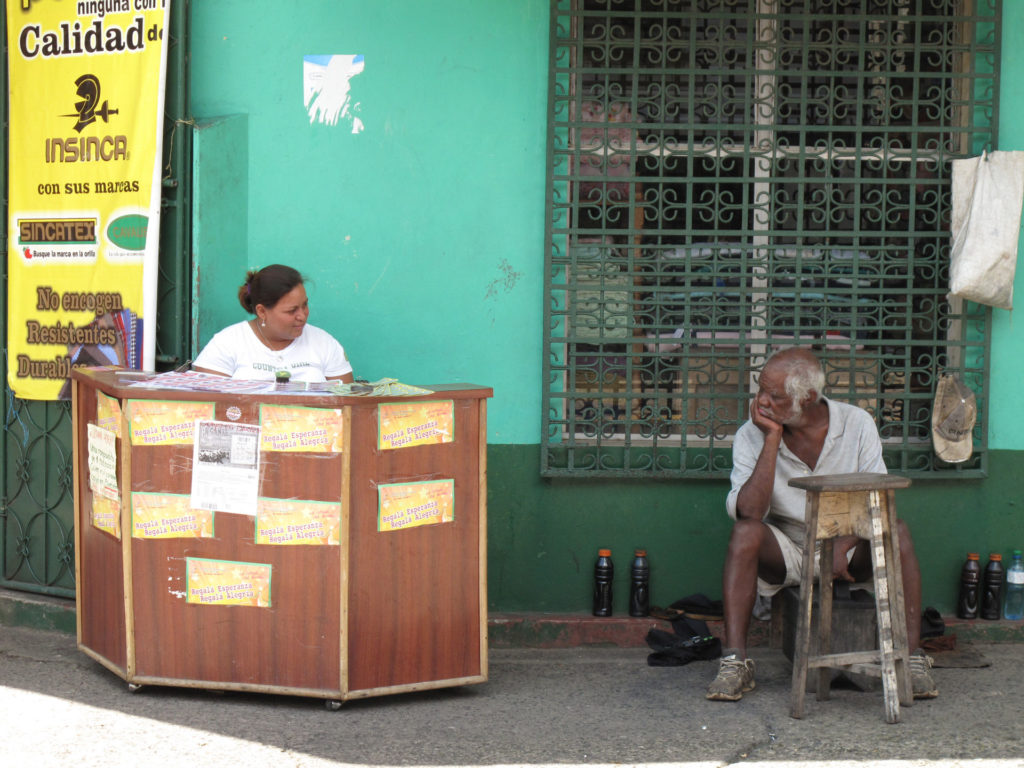
I arrived at the plaza and paused to gather myself. In many ways, the Caribbean Coast was no different to the rest of Nicaragua. Daily life was propelled by a kind of maddening inner logic that defies all outside comprehension. Music, color and bustle were ever–present. And the curious national love of concrete, I observed, was no less impassioned here than anywhere else.
But there were differences too. On the east side of the plaza stood a sad concrete monument dedicated to the six races of the Atlantic coast: Miskito, Mayagna, Rama, Creole, Garifuna and Mestizo. Each race was represented by a figure of a different colour and together they held aloft a concrete flame. The whole thing spoke of fading hope, neglect, decay. All–consuming decay.
But decay, in whatever form, always holds the promise of new life. That is its blessing—and its curse. Dwindling on the margins, perched between order and chaos, Bluefields is a city poised on the brink of transformation. But in what form, I wondered, would it emerge? If anything, the inward struggle for unity is a perilous, delicate alchemy. Turn too far into order, and bland sterility prevails. But turn the other way, into chaos, and the conditions for war emerge.
I thought about Roy and Merryl and all the others who had talked to me about their struggle. But soon it wouldn’t matter. Like so many other privileged Englishmen before me, I was turning my back on the region. I flicked through my photos and felt a sense of grim voyeuristic shame. Then I began the slow drift back to the Don Caribe.
“Hey boy!” Cried a voice in hoarse Creole English. “What you looking for?”
A lone, trembling waster glared at me from the pavement. He was lank and painfully dishevelled in the midday heat. Since the Colombians arrived in Bluefields, traditional inebriants like rum and marijuana have been replaced by the infinitely edgier pleasure drug of crack cocaine. Sky–high unemployment rates are now matched by sky–high habits. Bad for him, I didn’t need a fix.
“Come now,” He said, visibly agitated, wringing his hands intensely. “Come, come, come. I know you is looking for something.”
“No, mister. I’m just taking a walk.”
“Well you have a good day.” He spat finally. “A real good day. ”
Source: Perceptive Travel


